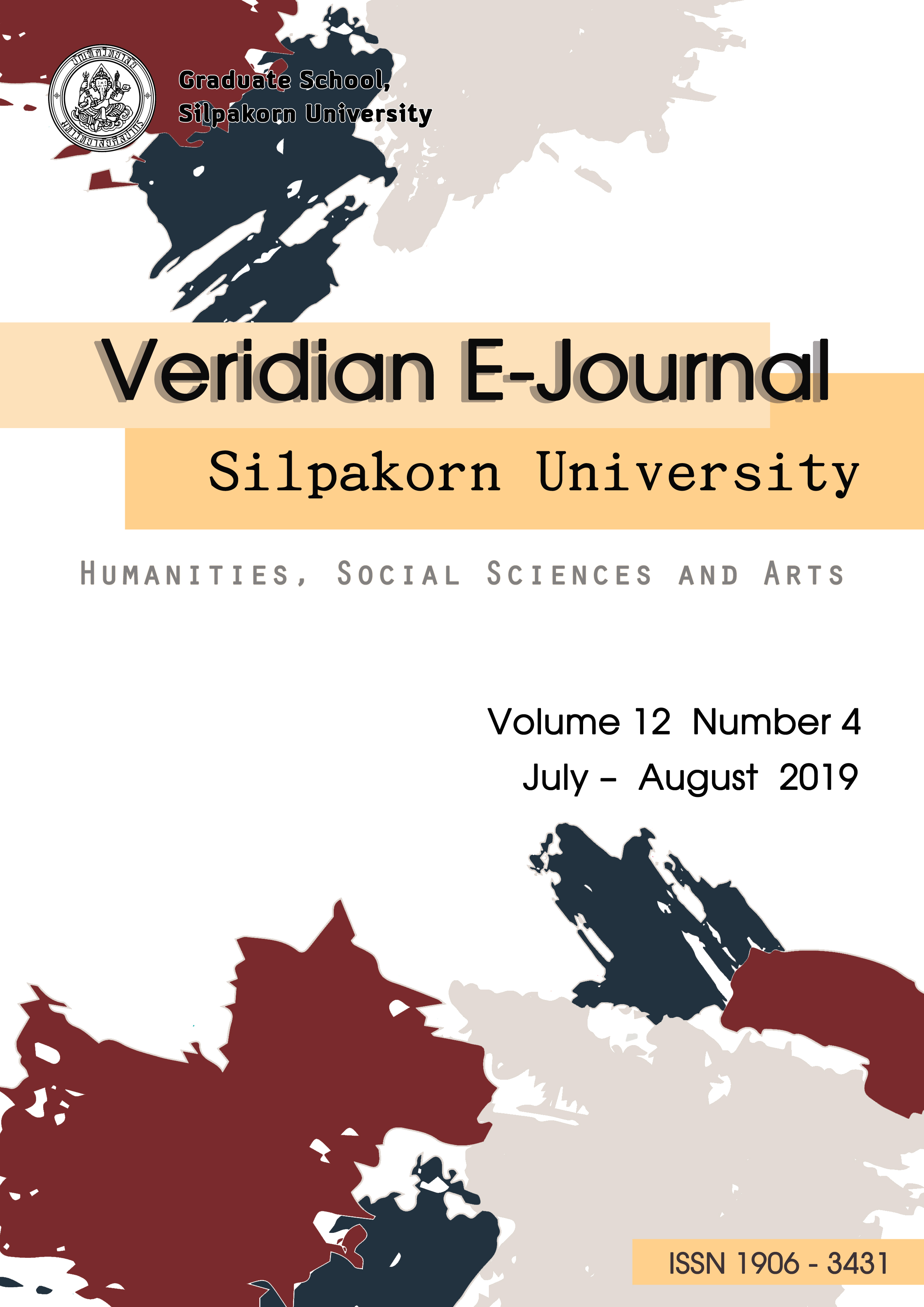โมเดลการส่งเสริมการผลิตไก่เบตงเชิงธุรกิจในพื้นที่สามจังหวัดชายแดนภาคใต้ (The Extension Model of Betong Chicken Production for Business in Three Southern Border Provinces)
Main Article Content
Abstract
การวิจัยครั้งนี้มีวัตถุประสงค์ เพื่อศึกษาความต้องการความรู้ในการผลิต ความต้องการช่องทาง และวิธีการส่งเสริมการผลิตไก่เบตง กระบวนการผลิตไก่เบตงเชิงธุรกิจ พัฒนาโมเดลการส่งเสริมการผลิตไก่เบตงเชิงธุรกิจ และความคิดเห็นเกี่ยวกับโมเดลการส่งเสริมการผลิตไก่เบตงเชิงธุรกิจของเกษตรกร
วิธีการวิจัย เป็นการวิจัยแบบผสม มี 4 ขั้นตอน ได้แก่ 1) การสำรวจโดยใช้แบบสัมภาษณ์แบบมีโครงสร้าง เป็นข้อมูลเชิงปริมาณ สุ่มตัวอย่างแบบง่ายเป็นเกษตรกร 103 ราย จากประชากร 138 ราย วิเคราะห์ข้อมูลโดยใช้สถิติพรรณนาและสถิติอนุมาน 2) สัมภาษณ์เชิงลึกจากผู้ให้ข้อมูลสำคัญ จำนวน 9 ราย วิเคราะห์เนื้อหาเพื่อพัฒนาโมเดลต้นแบบ 3) การสนทนากลุ่ม จำนวน 10 ราย วิเคราะห์เนื้อหาเพื่อปรับปรุงโมเดล และ 4) สอบถามผู้เชี่ยวชาญ จำนวน 9 ราย ใช้สถิติเชิงพรรณนาเพื่อศึกษาความคิดเห็นของผู้ที่เกี่ยวข้องในการใช้โมเดลการส่งเสริมการผลิตไก่เบตงเชิงธุรกิจ
ผลการวิจัย พบว่า เกษตรกรมีความต้องการความรู้ในการผลิตทั้งหมด 14 ประเด็น ผ่านสื่อทางการส่งเสริม คือ เจ้าหน้าที่จากหน่วยงานราชการ คู่มือ และอินเตอร์เน็ต วิธีการส่งเสริมเป็นแบบอบรมเชิงปฏิบัติการ ระบบธุรกิจการผลิตไก่เบตงจากการวิเคราะห์ปัจจัยสามารถแบ่งได้เป็น 7 ระบบย่อย คือ การจัดหาสินค้า ปัจจัยการผลิต การผลิตสินค้า ทุน การแปรรูป การจำหน่าย และการส่งออก โดยกระบวนการผลิตไก่เบตง จำแนกเป็น 2 รูปแบบ คือ การผลิตลูกไก่ และการผลิตไก่ขุน
โมเดลการส่งเสริมการผลิตไก่เบตงเชิงธุรกิจ ประกอบด้วย 1) กำหนดวัตถุประสงค์ เพื่อให้เกษตรกรมีแนวทางในการประกอบอาชีพที่มั่นคง มีรายได้จากการผลิตไก่เบตง มีความมั่นคงในชีวิตและความเป็นอยู่ที่ดีขึ้น โดยใช้แนวคิดการบริหาร 4M เป็นปัจจัยนำเข้า 2) ใช้กระบวนการ CSMMMRE ประกอบด้วย แหล่งต้นสาร นักส่งเสริม สาร สื่อ วิธีการ เกษตรกร และผลกระทบ 3) ผลผลิต เป็นความสามารถของเกษตรกรในการผลิตไก่เบตงในเชิงธุรกิจ และ 4) ผลลัพธ์ เป็น ความมั่นคง มั่งคั่ง และยั่งยืน เกิดการเปลี่ยนแปลงที่ดีขึ้นใน 3 ด้าน คือ เกิดอาชีพ (สังคม) เกิดรายได้ (เศรษฐกิจ) และเกิดสิ่งบ่งชี้ทางภูมิศาสตร์ (สิ่งแวดล้อม) โดยผู้ที่เกี่ยวข้องมีความเห็นด้วยกับโมเดลในระดับ มากที่สุด ได้แก่ ความเหมาะสม ความเป็นไปได้ ความสอดคล้องกับบริบท และการนำไปใช้ประโยชน์ได้จริง
The objectives of this research were to study knowledge need of production, the extension channel and methods requirements, production process of Betong chicken production for business, development an extension model of Betong chicken production for business and the opinions of those involved with the extension model of Betong chicken production for business in Three Southern Border Provinces.
The research methodology consists of 4 stages in mixed method 1) Survey using structured interviews was quantitative data and simple sampling with 103 farmers from 138 populations. Data were analyzed using descriptive and inferential statistics. 2) In-depth interviews with 9 key informants. Data were analyzed using content analysis for model development. 3) Focus group discussion with 10 experts. Data were analyzed using content analysis for model improvement and 4) Questionnaire with 9 experts to use descriptive statistics to study the opinions of those involved with the extension model of Betong chicken production for business.
The result finds that farmers had knowledge need in Betong chicken production all 14 issues. There were needed for the extension channels through the media were officers from government agencies, manuals, internet and workshop for extension method. Betong chicken production for business was based on factor analysis. It can be divided into 7 subsystems to sourcing, agricultural input, production, capital, agro product processing, sales and export. The process of producing Betong chicken was divided into 2 types: production of chicks and chicken production.
The extension model of Betong chicken production for business in Three Southern Border Provinces starting from objective were 1) Farmers to had a career path. Had stable career, increase in revenue from the production of Betong chicken, Increase stability in life and well-being. There were 4M management ideas as inputs. 2) Used the CSMMMRE model process, which consists of a communication source, sender, message, media, methods, receiver and effects. 3) Outputs had made farmers in the three southern provinces able to produced commercial Betong chicken and 4) Outcomes bring about prosperity, stability and sustainability by transforming farmers into 3 aspects were occupation (social), income (economic) and geographic indication (environment). Mostly agree with the model in suitability, possibility to practice, context concordance and actual utilization from people involved with model.
